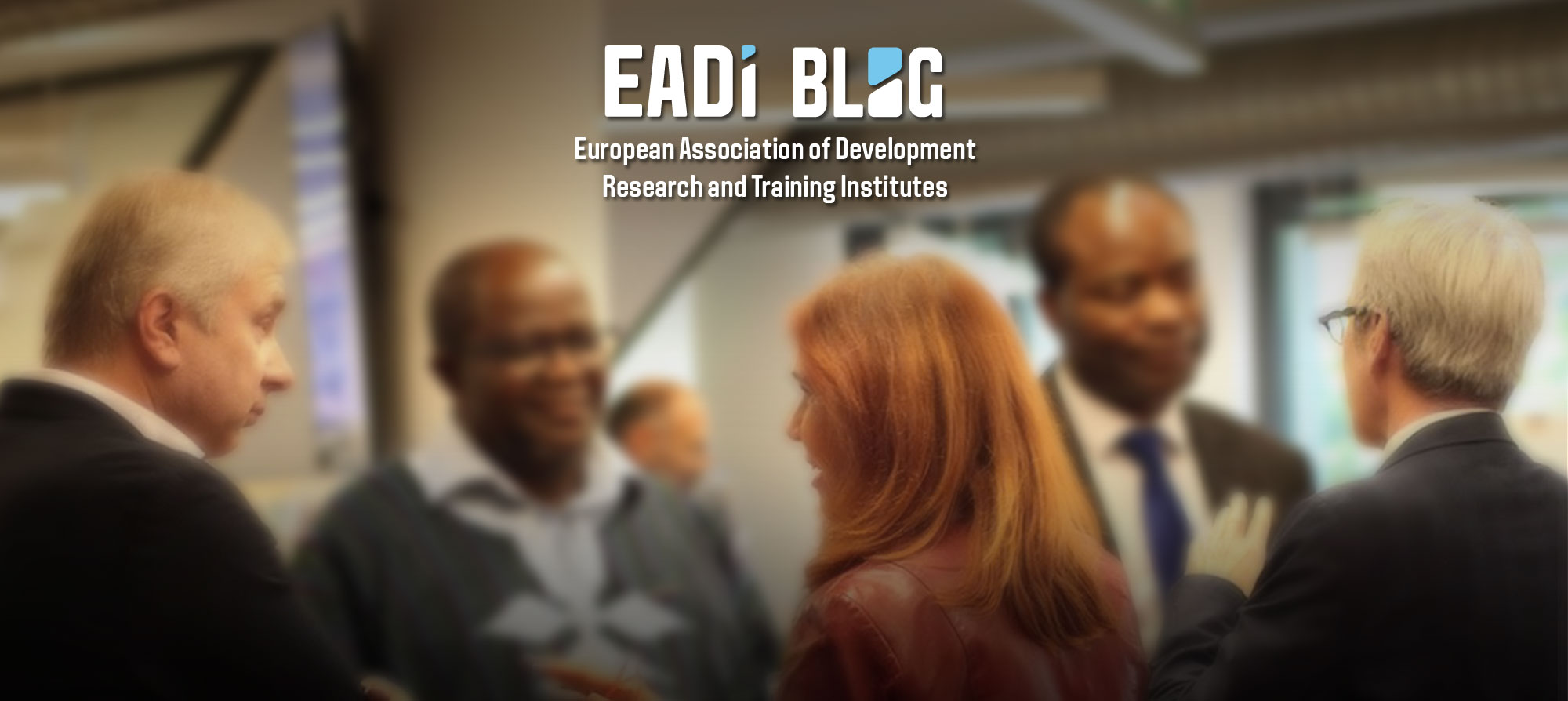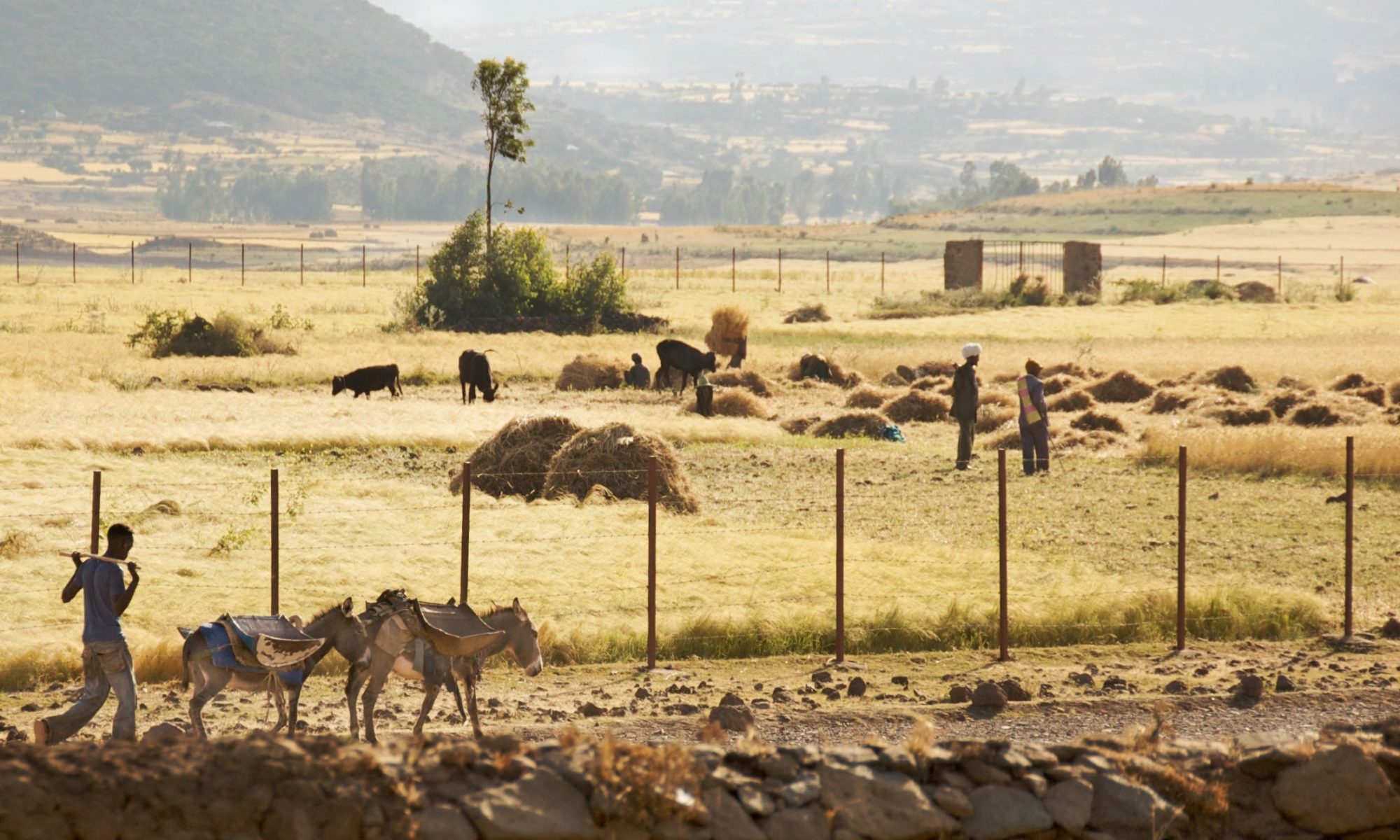By Elise Remling
Societies—particularly the poorest—are not ready to deal with the worsening impacts of climate change, and the deficit is growing, according to the latest report from the IPCC. We urgently need to step up investment in climate adaptation interventions, which aim to adjust social systems and structures to reduce their vulnerability to climate change.
However, in doing so we also need to recognize that interventions that make one community or area more resilient can make others even more vulnerable and insecure, and in some cases increase the risks of conflict. Researchers still often neglect such ‘maladaptive’ outcomes; practitioners even more so. How can organizations working on adaptation in fragile and conflict-affected situations make sure their interventions not only do no harm, but even contribute to peace?
The magnitude of projected climate impacts underlines that adaptation is neither a luxury nor an excuse to lower ambitions when it comes to mitigation. It needs to happen across the globe, and countries that are better off and most responsible for the problem need to assist developing countries in their adaptation efforts. This is especially true in fragile and conflict-affected situations where people are faced with the double burden of risks associated with fragility and conflict, along with climate-related risks.
While often implemented with the best intentions, poorly planned, designed or managed adaptation interventions can create problems for people and communities living nearby. A classic example is a flood control plan that diverts floodwaters from wealthier landowners to poorer farmers’ fields. Research shows that such maladaptation can reinforce the vulnerability of those the intervention is meant to assist; or it can shift vulnerability onto other people or places. It can even create entirely new sources of vulnerability.
The risk of maladaptation is higher in places affected by fragility and conflict, where local situations are already sensitive. For example, when interventions exacerbate existing grievances around land rights, livelihoods, or marginalization, they can aggravate conflict dynamics and negatively impact conflict resolution and peacebuilding efforts. Nevertheless, adaptation planners rarely consider the potential ramifications, even in areas with active conflicts.
As part of SIPRI’s Environment of Peace initiative, we have been looking at what is known about the relationship between adaptation interventions, peace and conflict. Based on what we found out, here are five rules that should inform adaptation in fragile and conflict-affected situations, in order to avoid unintended, maladaptive consequences.
1) Cast your net wide in exploring what puts people at risk
Climate impacts do not fall on neutral ground. The same physical impact can have much greater human impact when it occurs in places with uneven power relations, including significant political, social, economic or cultural marginalization—phenomena that are characteristic of many fragile and conflict-affected situations. The fault lines of these power relations, including aspects such as gender, race age, (dis)ability, or class, are crucial for understanding climate-related vulnerabilities. Awareness about them, and how they manifest in the target areas, must inform adaptation responses.
In all adaptation planning, but especially in fragile and conflict-affected situations, planners need to cast their nets wide in vulnerability assessments, looking not just at physical exposure to climate hazards but also at the social and political context.
2) Listen to local people and broaden participation
Because the root causes of vulnerability are highly context-specific, adaptation planning cannot achieve the required level of sensitivity to avoid maladaptative outcomes if it is done in a top-down or expert-driven way.
Instead, the affected populations—including those not directly targeted by the intervention—should be meaningfully involved throughout design, prioritization, planning and implementation. This participation, involving a broad range of community members and not just local leaders, will help set realistic and relevant adaptation objectives. It is especially important for the case of Indigenous Peoples and marginalized groups who have historically been excluded in decision-making yet often bear the brunt of those decisions.
3) Assess any potential unequal outcomes
Adaptation interventions take place in a highly uneven playing field. It is important to acknowledge and pay attention to how the opportunities, benefits and costs of adaptation are distributed, especially in places with existing conflict dynamics.
To ensure a project does not entrench existing grievances or widen social differentiation, adaptation planners and implementers should be encouraged to ask questions such as: how would the planned intervention affect the livelihoods of different groups, or their access to resources? Could it exacerbate the exclusion of specific communities? Could its outcomes be perceived as unfair, benefitting one group more than another?
Project design itself is also an important means to avoid unequal outcomes, or to mitigate or compensate them. Here again it is key to ensure meaningful and broad local participation, not only to capture such risks, but also to avoid any costs or trade-offs becoming socially unacceptable or perceived as illegitimate, unjust, or unfair. If the risks cannot be avoided, the project should be abandoned.
4) Consider how the intervention can contribute to peacebuilding
Adaptation interventions can be potential tools for conflict prevention and peacebuilding, for example by strengthening social cohesion and building trust. Integrating conflict issues into the vulnerability assessment and working with local peacebuilders can reveal potential synergies between building resilience and adaptive capacity to the impacts of both climate change and conflict.
For example, adaptation interventions could help to clarify land rights and tenure at the local level, or include dispute-resolution processes. Or an intervention might actively seek to reduce long-running social, economic, and political divisions between neighbouring communities in conflict over local resource use.
5) Monitor and evaluate progress and share the findings
Central to any adaptation intervention should be the continuous, rigorous monitoring and evaluation of progress and impacts. But this should not only look at favourable, intended outcomes: it should also explore wider, unintended and even maladaptive outcomes. It should especially track any effects on social and conflict dynamics and identify lessons for future interventions.
Monitoring and evaluation must be done throughout the project life cycle (i.e. in real time), allowing an adaptive management approach. This will help detect and address early signs of adverse unintended outcomes, so implementation can be adjusted if needed. This is especially important in situations affected by conflict and fragility which are dynamic and can change rapidly. To assess the long-term effects of an intervention, outcomes should also be evaluated a few years after a project’s closure as some harmful effects might only manifest years or even decades after the project is completed.
One obstacle to improving adaptation practice is that evaluations are seldom shared widely, especially when the findings are negative. Learning from experience will help avoid reinventing the wheel and repeating the same mistakes. Evaluations should therefore be shared among implementing agencies, donors and even the wider public. A commendable example from Sweden demonstrates the value of lesson-sharing and co-learning among and across different communities of practice.
These five rules are all worth following for the sake of effective and sustainable adaptation in any context, but evidence also suggests they can help to prevent harmful outcomes in fragile and conflict-affected contexts.
Adaptation is essential for human security. But few adaptation interventions are truly ‘win–win’ or ‘no-regret’; as there are always trade-offs to be made. Ignoring the potential complications and risks involved in climate adaptation makes maladaptative outcomes more likely to happen. Especially in fragile and conflict-affected situations we should not ignore this risk and make sure those trade-offs are managed justly and peacefully.
Note: This article gives the views of the author, not the position of the EADI Debating Development Blog or the European Association of Development Research and Training Institutes.
Elise Remling is a Research Fellow at the Centre for Change Governance at the University of Canberra and an Associate Researcher with the Stockholm International Peace Research Institute (SIPRI). She has a background in both academic and policy-oriented social science research on climate risks, social vulnerability, community resilience and adaptation to climate change at different levels of governance. Located at the interface between human geography, political science, and development studies, Elise’s work is driven by a keen interest to shine a critical light on the social and political implications of climate and environmental changes. She received her PhD in Environmental Sciences from Södertörn University, Sweden.
Image: A.Davey under a creative commons licence on Flickr


One Reply to “Five rules for climate adaptation in fragile and conflict-affected situations”
Comments are closed.